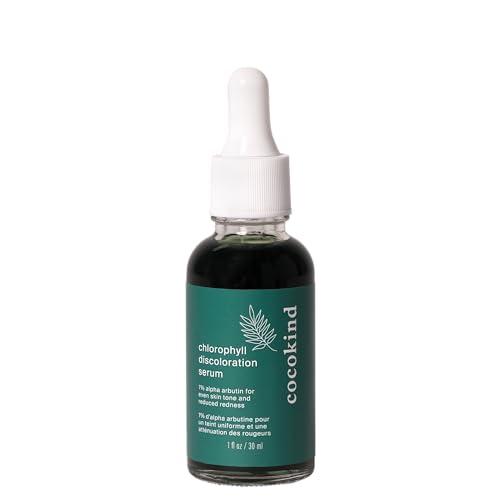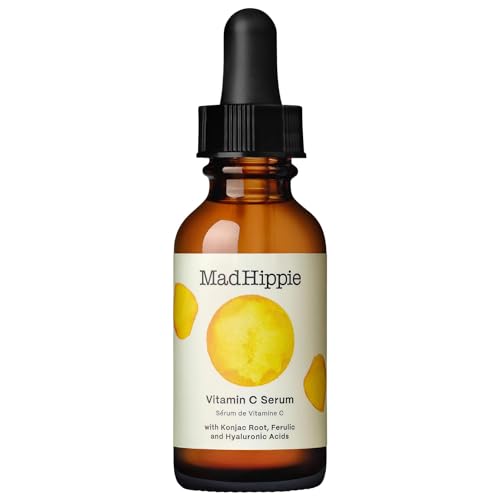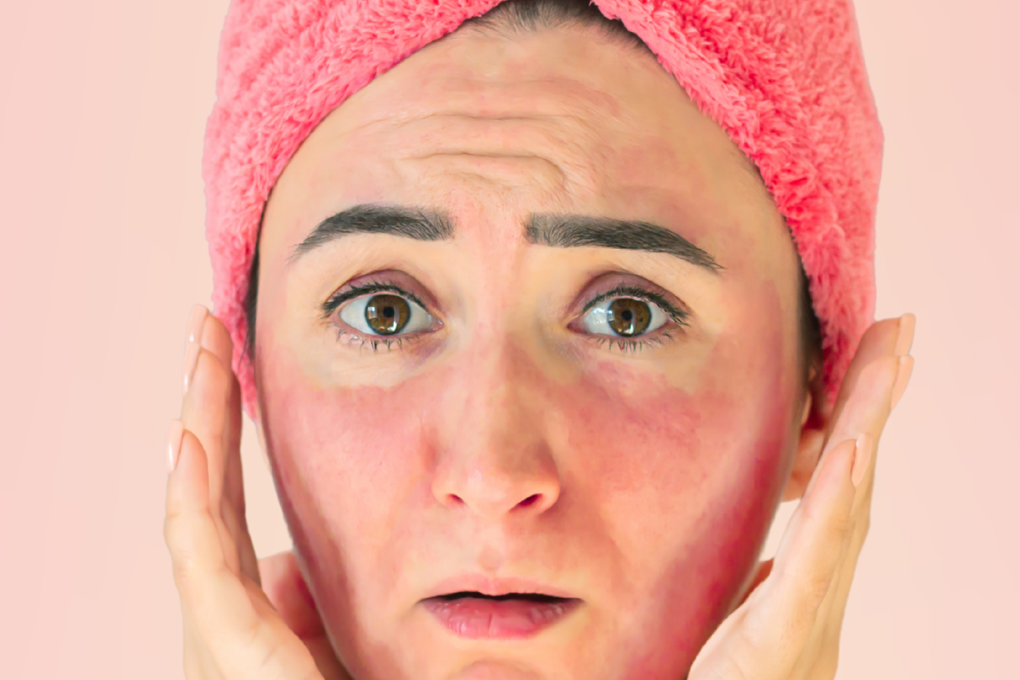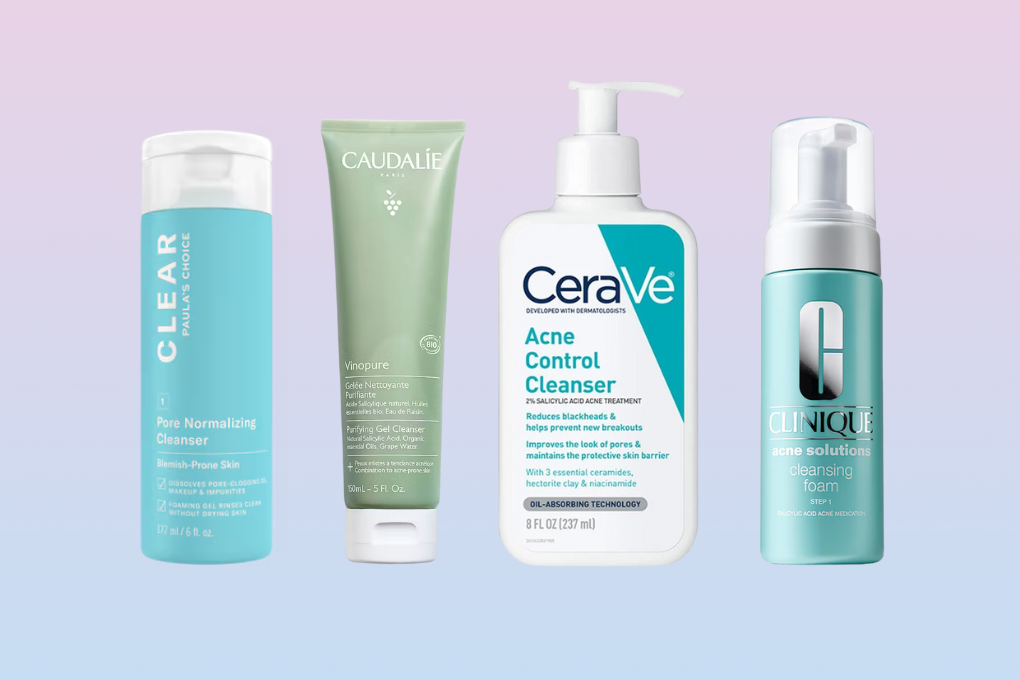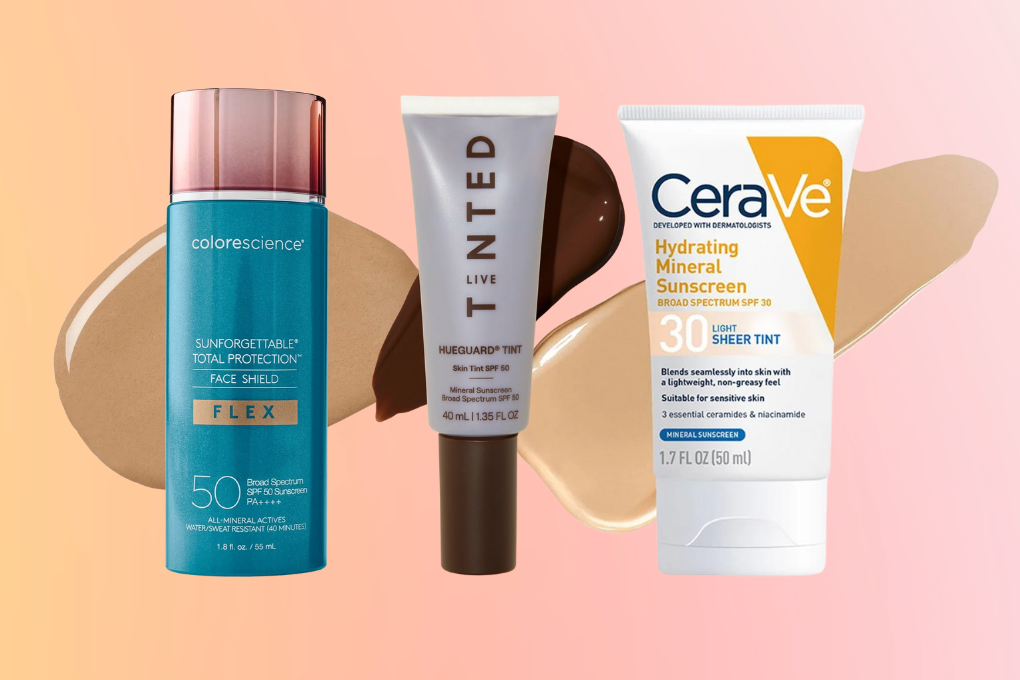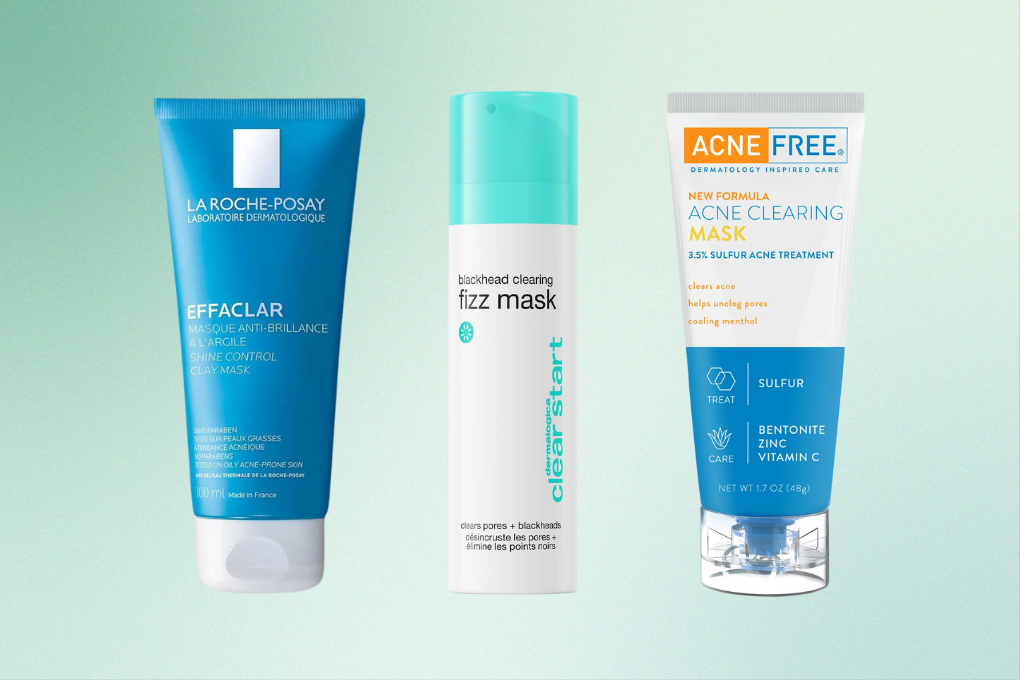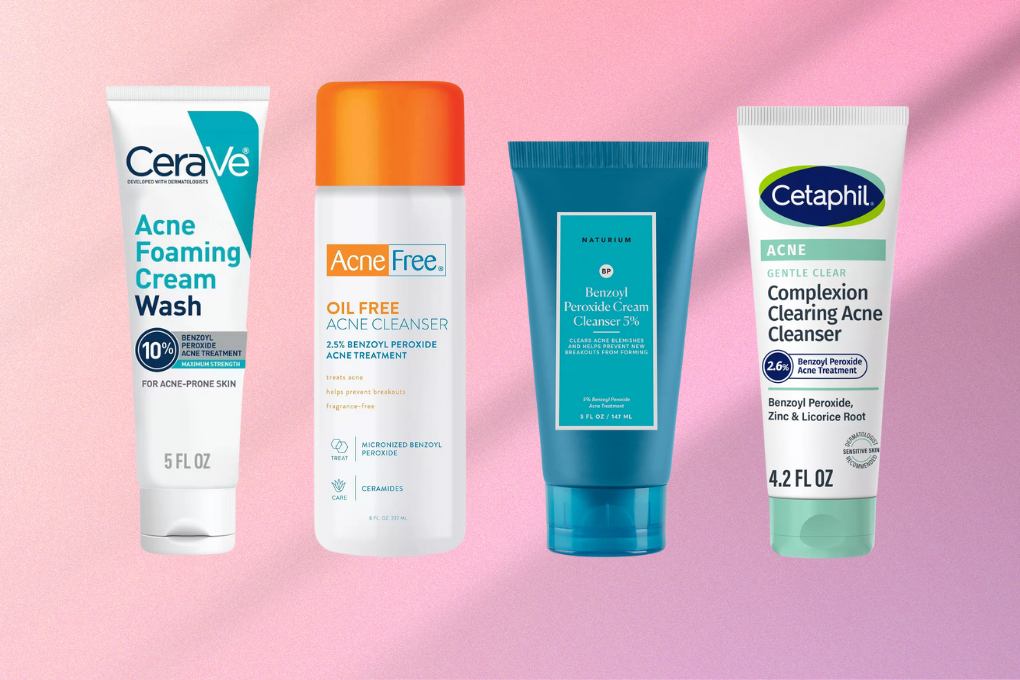The pimple that’s been bothering you has finally flattened out, but the color it leaves behind is still going strong.
If you’re someone who has struggled with acne, you know how frustrating it can be when you’ve put in a lot of time, money, and effort into finally clearing up a breakout, only to have persistent dark spots on your skin mark to spot of past pimples like a detailed map.
More often than not, post-inflammatory hyperpigmentation is to blame. In this article, we’re going to look at the causes of post-inflammatory hyperpigmentation, how long post-inflammatory hyperpigmentation lasts, and treatment for post-inflammatory hyperpigmentation.
What is Post-Inflammatory Hyperpigmentation?
Post-inflammatory hyperpigmentation (PIH) is a skin discoloration that can occur after you suffer from an inflammatory skin condition, such as acne. It is caused by an increase in melanin production in the affected area, which results in dark spots or patches that can persist long after the initial inflammation has healed.
In the case of acne, PIH is caused by the skin’s inflammatory response to the acne lesions. When the skin is inflamed, it produces more melanin as a defense mechanism. This excess melanin accumulates, resulting in the darkening of that spot.
The severity of PIH can vary depending on the individual and the intensity of the inflammation, and it can range from mild to severe. PIH can occur in people of all skin types, but it is more common and lasts longer in individuals with darker skin tones.
Treatment for Post-Inflammatory Hyperpigmentation
Post-inflammatory hyperpigmentation can be a frustrating condition. Even though it is technically considered temporary, it can begin to feel permanent when it takes months or even years for the spots left by acne to fade on their own.
With this said, there are treatments available that can help speed up the process. Many topical treatments can help fade PIH by inhibiting melanin production and promoting skin cell turnover. However, for true scarring that changes the texture of your skin, professional treatment is the only option.
Prevention is key in managing PIH. It’s important to avoid picking or squeezing acne or other inflammatory skin conditions, as this can exacerbate the inflammation and increase the risk of developing PIH.
Remember to not try too many products at the same time or in too high of strengths or it may cause irritation or a damaged skin barrier. Also, be patient and give each product enough time to show results before moving on.
Sunscreen
Like with most skin conditions, using sunscreen can majorly help with PIH. Even if you have a darker skin tone that doesn’t burn easily, you should still wear sunscreen to protect your skin. By blocking harmful UV rays, sunscreen can prevent further darkening of PIH spots that occurs as a result of sun exposure stimulating the melanocytes to make more dark pigmentation.
It’s important to choose a sunscreen with a high SPF rating, broad-spectrum protection (which means it protects against both UVA and UVB rays), and to apply it generously and regularly throughout the day, especially if you spend a lot of time outdoors. Additionally, wearing protective clothing, such as a sunhat and a long-sleeved shirt, can also help prevent PIH from getting worse.
La Roche-Posay Anthelios Light Fluid Face Sunscreen Broad Spectrum SPF 60
The Anthelios Light Fluid Sunscreen from La Roche-Posay is a fan favorite for a fast-absorbing, very lightweight sunscreen with a matte finish. If you usually hate the feeling of sunscreen on your face, this might be a good one for you to try. This chemical sunscreen is formulated for sensitive skin and also includes antioxidant protection to prevent sun damage. It contains alcohol to help it absorb quickly and is water-resistant for 80 minutes, making it a particularly good option for sweaty summer weather.
- Lightweight and fast-absorbing
- Water-resistant for 80 minutes
- Antioxidant protection
- Alcohol may be irritating for some skin types
La Roche Posay Anthelios Sunscreen UV Clear with Azelaic Acid Broad Spectrum SPF 50
Anthelios UV Clear Sunscreen from La Roche Posay was specifically designed for acne-prone and rosacea-prone skin. Its barely-there lightweight texture is noncomedogenic, and it uses azelaic acid to brighten and gently fight acne. Cell-Ox Shield Technology combines UVA and UVB protection with antioxidant protection to defend skin from free radicals caused by the sun. It soothes and hydrates and dries down to a natural finish.
- Barely-there texture with invisible finish
- Azelaic acid to brighten and fight acne
- Not water-resistant
Colorescience Total Protection Face Shield SPF 50 with Zinc Oxide
Colorescience is known for its sunscreens and makeup products with SPF protection. Their Face Shield is a mineral sunscreen that contains 12% zinc and a tint that will help protect from blue light, UVA, UVB, and infrared rays, as well as hydrating and antioxidant ingredients. Face Shield comes in either the sheer original tint that will not show on light to medium skin tones, as well as a bronze shade to blend in on darker skin tones. This sunscreen is lightweight and will very subtly blur imperfections while providing SPF 50 protection.
- Water-resistant for 40 minutes
- Zinc oxide protection with tint
- Protects from blue light
- Only two tint choices
- Expensive
Retinoids
Topical retinoids can be extremely effective in treating PIH. They work by binding to specific receptors in the skin, leading to increased cell turnover and exfoliation, which helps to remove the top layers of skin that may be discolored or pigmented. Retinoids have been shown to reduce PIH in skin of color, which can be more severe.
You can get retinoids both over-the-counter as adapalene and retinol, and as stronger prescription-strength formulations such as tretinoin (Retin-A) or tazarotene (Tazorac) from your doctor. Keep in mind that retinoids can make your skin more sensitive to the sun, so be extra sure to wear sunscreen and avoid excessive sun exposure while using them.
La Roche-Posay Effaclar Adapalene Gel 0.1% Treatment
From La Roche-Posay's Effaclar line, which is designed for acne-prone skin, comes their adapalene 0.1% treatment gel. Adapalene is a prescription-strength retinoid available over the counter in the U.S. in 0.1% strength. It works by increasing cell turnover to help prevent acne and can be used to treat blackheads, whiteheads, clogged pores, pimples, and even KP bumps on the arms. La Roche-Posay's version comes in an effective fragrance-free gel that you apply in a thin layer to your face or body once a day.
- Maximum over-the-counter strength
- Non-greasy gel-like texture
- HSA and FSA eligible
- Expensive
The Ordinary Retinal 0.2% Emulsion High-Strength Stabilized Retinaldehyde Serum
The Ordinary has many different retinoid products to choose from, but their Retinal 0.2% Emulsion is their highest strength formula. While primarily advertised for aging, the retinaldehyde in this product is a one-step away from prescription tretinoin (the active form of vitamin A), making it a great retinoid entry point for acne-prone skin. This serum-textured formula will increase cell turnover, helping to remove dead cells that can clog pores.
- Retinaldehyde is a strong over-the-counter retinoid
- Airless pump to protect formula
- Light creamy serum texture
- Small amount
- Yellow hue can rub off on light fabrics
Arbutin
Arbutin is a popular ingredient in skin care products that is often used in the treatment of PIH. Due to its ability to inhibit tyrosinase, the enzyme that produces melanin, it can lead to a reduction in the appearance of dark spots. Arbutin is available over the counter, usually in the form of serums.
Cocokind Chlorophyll Discoloration Serum with 1% Alpha Arbutin and Licorice Root
Alpha Arbutin Serum 2% with Alpha Arbutin and Niacinamide
Niacinamide
Niacinamide, also known as vitamin B3, works by inhibiting the transfer of pigment from melanocytes (cells that produce melanin) to surrounding skin cells, thereby reducing the appearance of hyperpigmentation.
It is commonly used in skincare products due to its various benefits for the skin; you can find it in many serums, moisturizers, and toners. High levels of niacinamide can be irritating for some people, so start with a product that contains 5% niacinamide or less, and be careful of layering multiple products that contain it.
Good Molecules Niacinamide Brightening Toner with Vitamin C, 2% Arbutin, and 3% Niacinamide
Vitamin C
Vitamin C is a potent antioxidant that works on PIH by inhibiting the production of tyrosinase, an enzyme involved in melanin synthesis. This can help reduce the amount of melanin produced by the skin, which can lead to a reduction in hyperpigmentation. In addition, vitamin C can also help brighten the skin by promoting exfoliation and increasing cell turnover.
Not all forms of vitamin C are created equal when it comes to treating hyperpigmentation. L-ascorbic acid, a highly potent and unstable form of vitamin C, has been shown to be effective in reducing hyperpigmentation when used at a concentration of 10-20%. Vitamin C in the form of L-ascorbic acid can be found in many serums; however, it can be irritating for some people. There are also stabilized forms like magnesium ascorbyl phosphate or sodium ascorbyl phosphate that might be better to start with if you have sensitive skin.
Cocokind Vitamin C Glow Serum with Azelaic Acid, Ascorbyl Glucoside, and Sea Grape Caviar
Timeless Vitamin C Serum with Vitamin E, Ferulic Acid, and 10% L-Ascorbic Acid
Azelaic Acid
Azelaic acid is another tyrosinase inhibitor which can reduce the amount of melanin causing PIH. In addition to its ability to lighten hyperpigmentation, azelaic acid has anti-inflammatory properties that can help calm and soothe irritated skin, making it a good option for those with acne-prone or sensitive skin.
Azelaic acid is available in over-the-counter products, and as a prescription from your doctor in higher strengths.
Paula's Choice 10% Azelaic Acid Booster with Licorice and 0.5% Salicylic Acid
This 10% Azelaic Acid Booster from popular skincare brand Paula's Choice is one of the strongest azelaic acid products available over the counter. The azelaic acid is combined with 0.5% salicylic acid to fight acne, fade hyperpigmentation, and reduce redness. It comes in a lightweight gel-cream formula that can be applied by itself or mixed with a serum or moisturizer to simplify your routine.
- Great for sensitive or rosacea-prone skin
- Reduces redness, fights acne, and fades marks
- Can be mixed with other skincare products
- Expensive for the amount
THAYERS Let's Be Clear Water Cream with 3% Azelaic Acid
Kojic Acid
Kojic acid is a natural ingredient that is derived from fungi, commonly found in Japanese sake and soy sauce. It is known for its ability to effectively lighten and fade hyperpigmentation by inhibiting the production of melanin in the skin by blocking the enzyme tyrosinase.
Kojic acid is available in over the counter products, particularly serums, in strengths of 1-4%. However, it is important to note that kojic acid can be irritating for some people and it is crucial to wear sunscreen daily while using kojic acid products, as it can make the skin more sensitive to the sun.
Curology Dark Spot Serum with 1% Kojic Acid, 5% Niacinamide, and 3% Tranexamic Acid
Naturium Tranexamic Topical Acid 5% with Kojic Acid, Niacinamide, and Licorice Root
Alpha Hydroxy Acids (AHAs)
AHAs, such as glycolic acid and lactic acid, can help to exfoliate the skin which can lighten hyperpigmentation by removing the top layer of the skin where the pigment is most concentrated. AHAs also promote cell turnover by stimulating the production of new skin cells, which can help improve skin texture and tone and reduce the appearance of PIH.
AHAs are available in serums, toners, and some face cleansers. Certain AHA products can be very strong, so it’s important to start at a low strength and use them in moderation to avoid irritation. Remember to use sunscreen during the day, as AHAs can increase skin sensitivity to the sun.
REN Clean Skincare Ready Steady Glow Daily Tonic with Lactic Acid and Salicylic Acid
Ready Steady Glow Tonic by Ren Skincare contains the best of both worlds, with both lactic acid and salicylic acid in its formula. Lactic acid helps remove dead skin cells from the surface to smooth, while salicylic acid can penetrate oil to help clear pores. This dual approach is a great option if you have oily skin and blackheads, but would also like to address skin texture and tone. Additionally, azelaic acid precursors help brighten skin and fade hyperpigmentation.
- Lactic acid smooths texture
- Salicylic acid helps keep pores clear
- Azelaic acid precursors help even skin tone
- Contains fragrance
- Citrus oils may be irritating for some skin types
Paula's Choice Skin Perfecting 8% AHA Gel Exfoliant with Glycolic Acid
Paula's Choice 8% AHA Gel Exfoliant is a unique glycolic acid leave-on product that comes in a weightless gel texture. Glycolic acid in an 8% strength helps to shed layers of built-up dead skin, which can clear pores blocked by dead skin cells. This exfoliation helps to smooth texture, even skin tone, and even reduce the appearance of fine lines. Chamomile and green tea help soothe the skin and protect it from environmental stressors, and hyaluronic acid hydrates and plumps.
- Glycolic acid smooths texture and fine lines
- Green tea and chamomile calm and soothe redness
- Expensive for the size
- May be too strong for daily use
The Ordinary Glycolic Acid 7% Exfoliating Toner with Brightening and Smoothing AHA
The Glycolic Acid Exfoliating Toner from the Ordinary contains 7% glycolic acid to remove dead skin cells and even skin texture, along with Tasmanian pepperberry extract to reduce irritation that can come with exfoliation. While ostensibly a facial toner, many people find it a multi-use product for the whole body. Its exfoliating properties can help with body acne, dandruff, keratosis pilaris bumps on the arms, and it can even be used as a deodorant to reduce body odor.
- 7% glycolic acid helps smooth skin texture
- Tasmanian pepperberry extract helps soothe
- Can also be used on body or as deodorant
- Can be irritating for sensitive skin, start slowly
Hydroquinone
Hydroquinone is a skin-lightening agent that is commonly used to treat hyperpigmentation. It works by inhibiting tyrosinase, thereby reducing the amount of melanin produced in the affected areas, leading to a more even skin tone.
Hydroquinone requires a prescription and should only be used under the guidance of a dermatologist or healthcare professional, as excessive or prolonged use can cause skin irritation, redness, and even a condition called ochronosis, which is characterized by a bluish-black discoloration of the skin.
Laser Treatment
Laser treatments may also be effective in treating PIH, as they can help remove the damaged top layers of skin and promote the growth of new, healthy skin cells. Laser treatments should only be performed by a licensed and experienced dermatologist or cosmetic surgeon. Your dermatologist can help you determine whether laser treatment is a good option for you and your particular case of PIH. Using the wrong type of laser can sometimes cause hyperpigmentation, particularly on darker skin types prone to PIH, so proceed carefully with laser treatments.
Post-Inflammatory Hyperpigmentation vs. Post-Inflammatory Erythema
Post-inflammatory hyperpigmentation (PIH) and post-inflammatory erythema (PIE) are both marks caused by our skin’s inflammatory response to acne. While PIH are darker spots that occur when a pimple triggers the skin to produce more melanin, PIE, in contrast, appears as red or purple marks after healed acne lesions. PIE is caused by the dilation or damage of capillaries close to the surface of the skin, leading to persistent redness.
Unlike PIH, PIE is seen more often in those with lighter skin. These marks are especially noticeable after inflammatory acne, such as papules, pustules, or cysts, have healed. The appearance of PIE can vary with temperature or physical activity, which may worsen the appearance of the dilated capillaries.
These pink or red spots on the skin will disappear over time, but you can help them on their way by always wearing sunscreen. If you need them gone quickly for an event, PIE may benefit from treatments that reduce redness and target vascular changes, including laser therapy.
Is Post-Inflammatory Hyperpigmentation Scarring?
The key difference between acne scars and hyperpigmentation is that acne scars are permanent changes in our skin’s texture, while hyperpigmentation temporarily affects the color of the skin.
While both conditions can be treated, the approach will be different. Acne scars require more aggressive treatments, while PIH can often be treated with topical creams and serums.
How Long Does Post-Inflammatory Hyperpigmentation Last?
The good news is that post-inflammatory hyperpigmentation from acne does eventually go away. With that said, while PIH can fade on its own over time, it can take weeks, months, or even years for the pigmentation to completely disappear.
The length of time it takes for PIH to fade can vary depending on the severity of the inflammation, your skin type, the underlying cause of the condition, and sun protection. In some cases, PIH may be more stubborn and require treatment to help fade the pigmentation.
Dealing with hyperpigmentation after acne can be frustrating, but the good news is it’s a completely treatable condition. While PIH spots from acne will usually fade on their own over time, they can be helped along with topical treatment.
Remember, prevention is key, so make sure to protect your skin from the sun and avoid picking at your pimples. And if you do end up with hyperpigmentation, don’t worry—there are plenty of effective treatments out there. Most importantly, don’t let post-inflammatory hyperpigmentation hold you back from feeling confident in your own skin.











